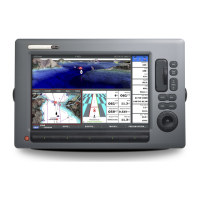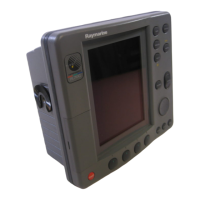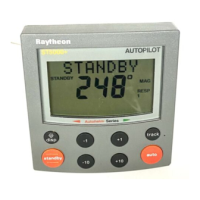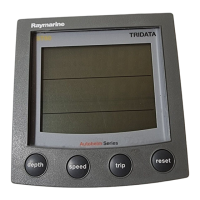Chapter 8: Installation 8-23
SeaTalk® and
NMEA In
HSB Connection
An In/Out connector is provided for an HSB series repeater or chartplotter
display.
Note: The HSB cables have ferrite clamps attached at each end to ensure
EMC conformance. The cables are available in lengths of 1, 3, 6, 10 and 20 m.
Figure 8-12: HSB Connector
The HSB cable is supplied with a blanking plug for the inter-unit cable port.
This should be attached to the repeater display. If the repeater display is
installed in an exposed position seal the blanking plate with silicon compound.
SeaTalk
®
and NMEA In
The HSB Series display can receive a comprehensive range of data. The
primary data is described below:
Heading data should ideally contain both magnetic and true heading. If only
one is available then a source of magnetic variation should be connected.
Table 8-4: Function of SeaTalk and NMEA Data
Data Primary Uses Suggested Source
Heading Chart: modes/ vectors Compass connected to SeaTalk bus,
NMEA Compass
Position Chart: own vessel position
MOB (also requires speed and HDG
data)
SeaTalk GPS connected via Auxiliary JB
Existing GPS Navigator via SeaTalk bus
Existing GPS (or Loran-C) navigator with
NMEA output
Waypoint Chart: Waypoint and route transfer Existing GPS Navigator via SeaTalk bus
Existing GPS (or Loran-C) navigator with
NMEA output
Pin 1, screen
Pin 3, blue
Pin 2, white
HSB connector
HSB connector
Pin Pin name Function
1 CGND Screen
2 HSVB_POS SeaTalk HSB
3 HSVB_NEG SeaTalk HSB
2 3
1
HSB
D4253_2
Rear of Display Unit
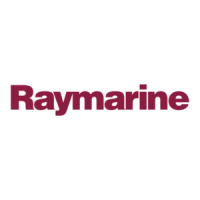
